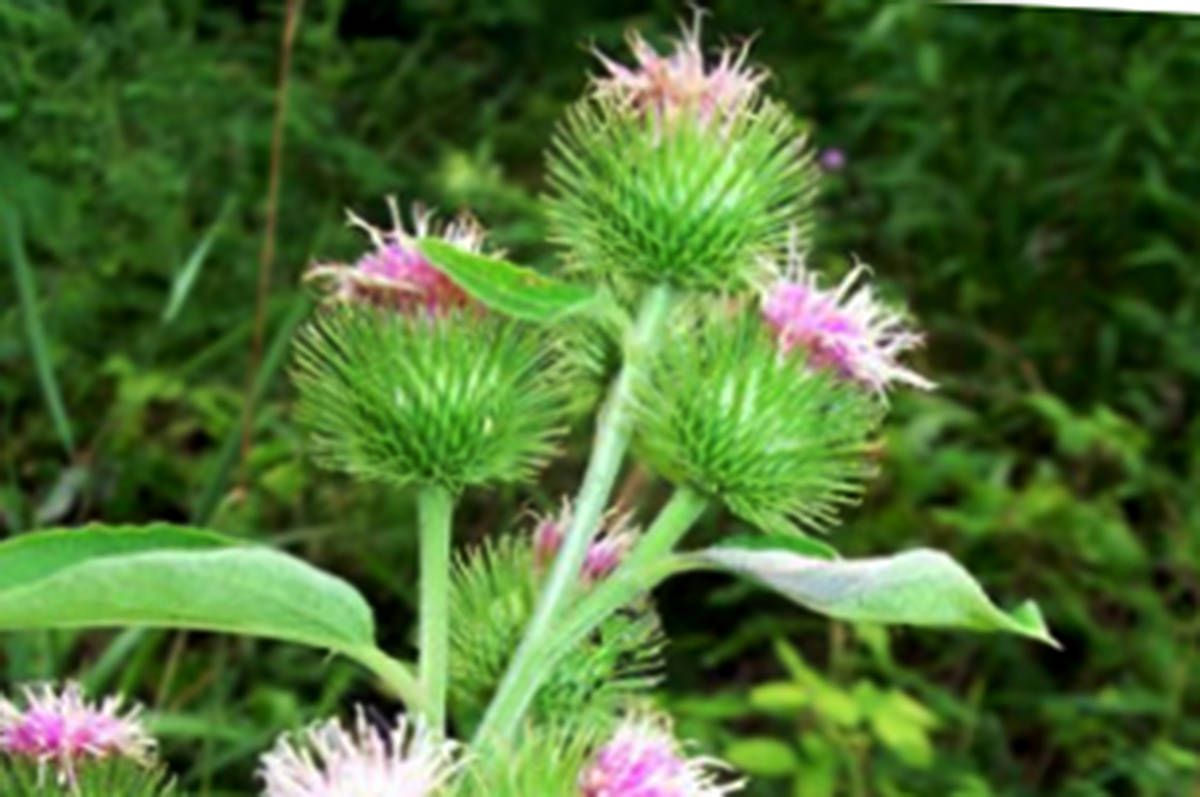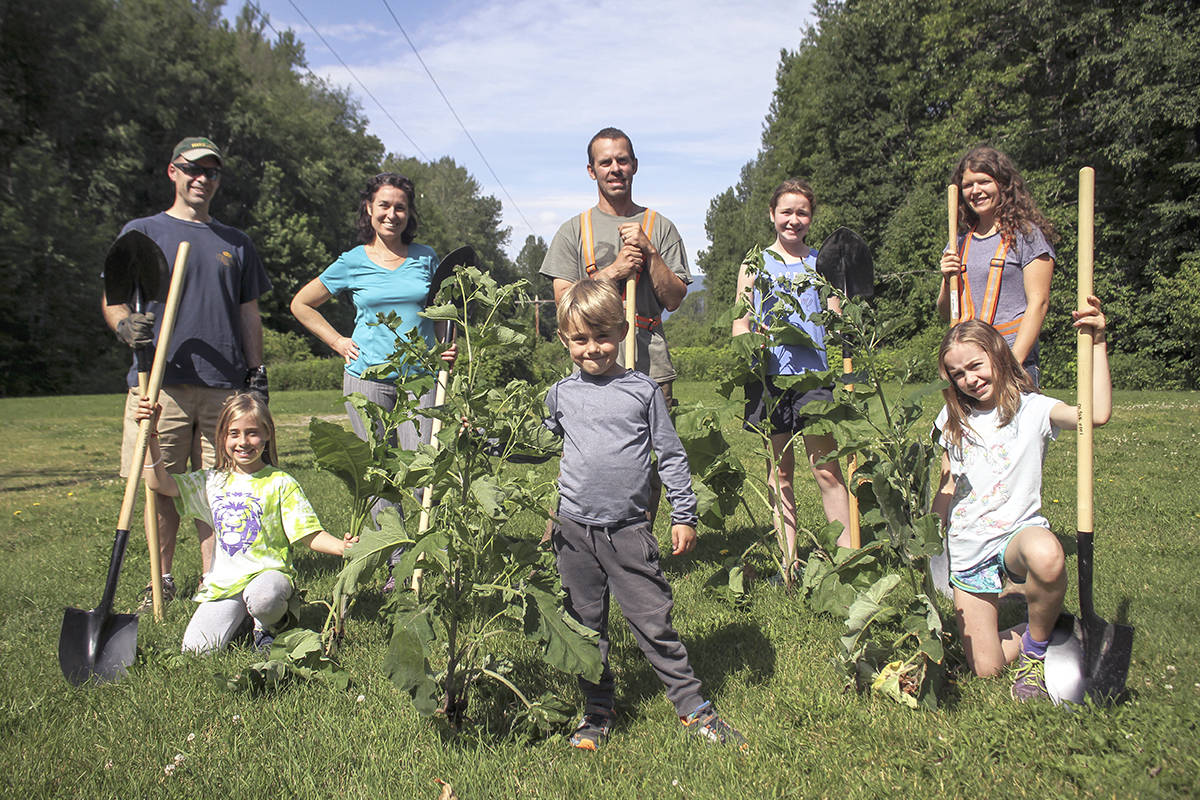The City of Terrace’s gardener is encouraging the public to help combat an invasive weed taking over Ferry Island.
At a community weed pull on June 27, gardener Eric Lennert taught volunteers how to identify and pull out the invasive burdock that’s been spreading throughout the popular recreational area.
“It’s starting to infest the island… if we don’t take care of it, it will become a major problem,” says Lennert. “They take over where natural native plants would grow and they’re pretty harmful in terms of getting onto dogs, and they can ruin your clothes.”
The burdock’s big burrs easily cling onto fabric and fur. By attaching itself to people and animals, its seeds are quickly distributed by the burrs.
“It’s a big furry ball and it has lots of little seeds in it, people find them and they’ll just like start scratching then that way the seeds fall out and they’ll just start sprouting right from there,” he says.
“[In its second year,] it can be anywhere from six-feet tall and could have 50 to 60 burrs on it per plant, which in each burr there’s probably hundreds of seeds… so you got 12,000 seeds or so per plant, it spreads really fast and it likes to grow in gravel, it’ll grow in anything.”
READ MORE: Lost Lake closed for fishing due to goldfish invasion
Scientifically known as arctium minus, if the burdock gets out of control it’s possible the island trails won’t be walkable anymore and will likely infest other recreational areas, including the town itself at parks and by sidewalks.
And there are many other invasive species growing in the Terrace region that are continuously being fought.
From the himalayan balsam, which gets into creek systems and causes bank erosion, to even the common oxeye daisy seen as an attractive-looking wildflower but still damaging. Lennert says these species aren’t native to North America and are often brought back from other continents by people who want to grow it for personal use.
“All the invasive species, whether it would be weeds or fish, they’re brought here as either food, they were pretty or someone wanted to plant them in their garden,” he says. “But there’s nothing here to eat them, there are no competitors, they’ll compete everything and just take over.”
READ MORE: Province issues funds to combat invasive plants
Lennert adds that disposing of invasive plants can be very difficult since they can contaminate a waste site or have their seeds spread when composted.
“By spreading the compost somewhere, you can just start a new infestation elsewhere,” he says. “We’ve asked the [landfills] to either incinerate or bury them deep and not put them in the compost.”
Lennert says he plans on organizing more events to get the community involved and develop an “eagle eye” towards the invasive species to stop them from spreading.
natalia@terracestandard.com
Like us on Facebook and follow us on Twitter

